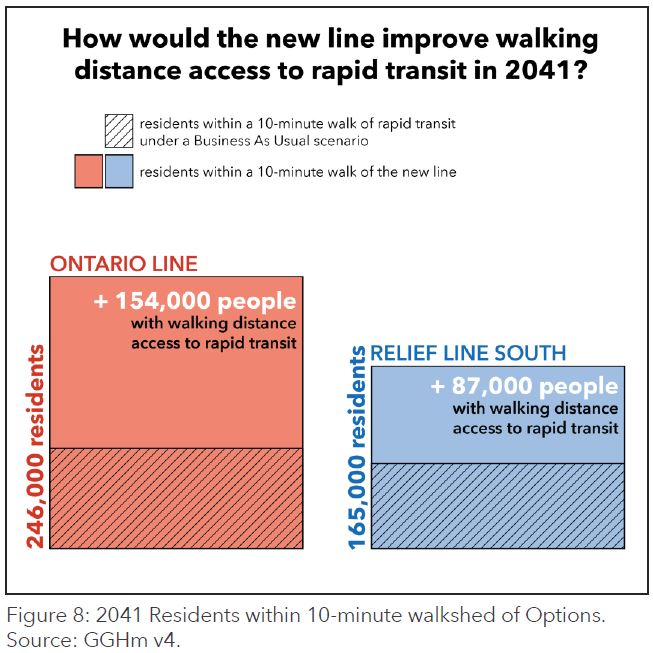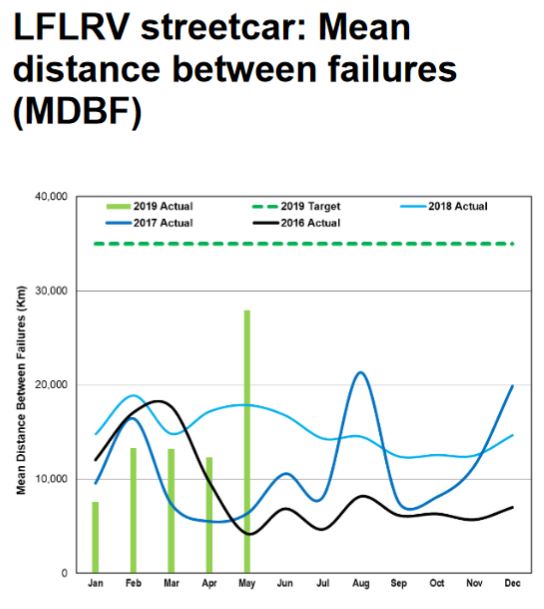Several streetcar routes will be affected by construction, schedule changes and the continuing shift from CLRVs to the low-floor Flexitys effective September 1, 2019. I will publish the detailed service plans with my overview of all schedule changes taking effect on that date, but here is a preview of the route changes.
Kingston Road & Queen Construction
Two projects will block streetcar service from The Beach from September 1 until mid-November:
- Watermain replacement
- Special trackwork replacement at Kingston Road including Woodbine Loop
501 Queen Service
The 501 Queen route will be operated with several overlapping services:
- Regular 501A Queen cars will operate between Humber Loop and Russell Carhouse.
- Buses on 501R will operate between River Street and Neville Loop diverting via Woodbine, Lake Shore and Coxwell.
- Service to Long Branch on 501L will be provided by low-floor cars running from Humber to Long Branch on ten-minute headways at all times.
- Late evening service will run through from Long Branch to Russell Carhouse.
Tripper services will operate including the restoration of 508 Lake Shore:
- Bus trippers on 501 Queen will operate westbound from Coxwell rather than from Kingston Road. In the PM peak, eastbound trippers will run through to Neville using the same diversion as the 501R.
- Streetcar trippers will operate on 508 Lake Shore with five trippers in each peak period.
- In the AM peak cars will follow the Queen route from Long Branch to Roncesvalles, then run east to Parliament via King Street. They will return to Roncesvalles Carhouse via Parliament and Carlton/College, a route used by Long Branch trippers years ago to provide supplementary westbound service on Carlton to the University of Toronto. Cars will leave Long Branch Loop between 6:40 and 8:10 am.
- In the PM peak, the trippers will run east from Roncesvalles to Broadview via King, then loop via Broadview, Dundas and Parliament running west from King and Parliament to Long Branch. Cars will leave Church Street westbound between 4:20 and 5:40 pm.
Overnight service on 301 Queen will terminate at Russell Carhouse, and it will continue to operate on the recently-established 15 minute headway. A 301B bus shuttle will operate from Russell Carhouse east to Neville diverting around the construction zone.
502/503 Downtowner/Kingston Road
For the duration of this project, the 502 and 503 services will be consolidated as 503 Kingston Road, and this route will operate from Bingham Loop to York Street. There will be no 502 bus service to McCaul Loop.
Service will divert around the construction site via Dundas and Coxwell both ways.
The downtown loop will be changed from the usual 503 arrangement. Buses will not operate on Wellington, but will continue on King to York Street. They will then turn north on York to Richmond, west to University and south to King Street. The layover point will be on York Street north of King.
22/322 Coxwell
During weekday daytime, the 22B Coxwell service will use Coxwell-Queen Loop rather than the longer route via Eastern Avenue which will be blocked by construction.
Evening and weekend service on the 22A and 322 services to Victoria Park will divert both ways via Dundas Street but will loop south to Queen via Coxwell-Queen Loop.
512 St. Clair
With the addition of low-floor service to Long Branch operating from Roncesvalles Carhouse, the 512 St. Clair route will move back to Leslie Barns. The carhouse routing will be via Queen, King and Bathurst, and cars will operate with pantographs up over these trips. This will mark the first scheduled pantograph operation over portions of these streets.
The operator relief point will be moved east from Lansdowne to St. Clair Station.
Carhouse Allocations
The routes and vehicles will be allocated to carhouses as shown below. Note that these are the scheduled service numbers, not the total fleet including spares.
Current plans are to begin conversion of 506 Carlton to Flexity operation later in the fall, but the details of this have not yet been published.








